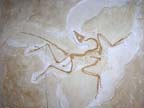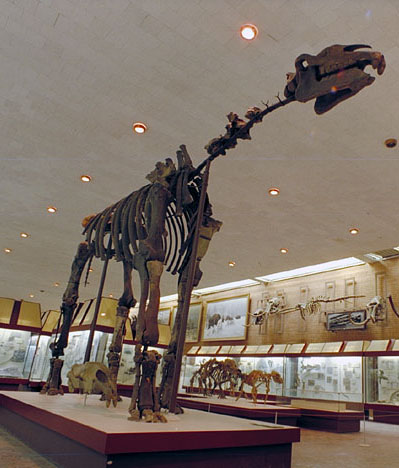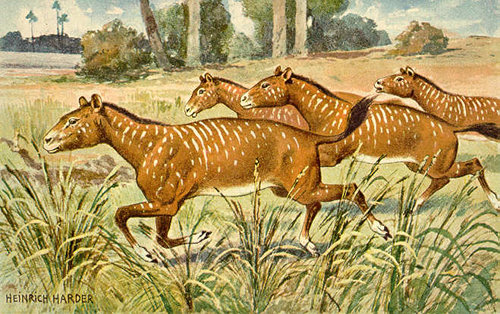 |
 |
 |
 |
 |
Produced
by the Population Genetics and Evolution class, Furman University |
||||
 |
 |
 |
 |
 |
Produced
by the Population Genetics and Evolution class, Furman University |
||||
 |
The
Paleogene |
 |
||
 |
In the Cenozoic, mammals radiated into the ecological vaccuum caused by the dinosaur extinctions. Multituberculates like Ptilodus were abundant but declining, giving way to placental mammals. The most primitive predatory mammals were condylarths - a group that may be ancestral to hooves ungulates, elephants, and the the extinct mesonychids which may have given rise to ancient whales like Basilosaurus. (However, many paleontologists now place whales and artiodactyls like hippos together). Curiously, the other major predators were giant birds like Diatryma (Gastornis) that dominated early and the diverse phorusracids that dominated later in the Paleogene. Pantodonts like Coryphodon were the earliest large mammalian herbivores, but the drying of the climate during the Paleogene stimluted a radiation of diverse herbivore groups, including ancestral horses like Hyracotherium, thier artiodactyl relatives the Titanotheres (like Brontotherium), and the perissodactyl browsers like Paraceratherium - the largest land mammal to ever live. Other major groups of mammals also evolved and radiated furing the paleogene, like rodents and primates, represented by the earliest primate, Purgatorius. |
 |
||
| Above: Triceratops; Photo From: msnbc.com Below, Paleogene scene, from: Ocean leadership | Above: Indricotherium from: Univ. of Cal. Museum of Paleotology Below, Paleogene scene, from: Ocean leadership |
|||
 |
 |
|||